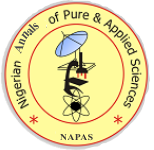Study of Corrosion Inhibition Potentials of Eichhornia crassipes Leaves Extract on Mild Steel in Acidic Medium using Artificial Neural Network
DOI:
Keywords:
Artificial neural networks (ANNs), corrosion rate, simulation, corrosion behaviourAbstract
Prediction of corrosion behavior of steel in acidic environments is an essential step towards optimizing the design of equipment in any industrial setting. An artificial neural network (ANN) may be used as a reliable modeling method for simulating and predicting the corrosion behaviour. The present study has been conducted to investigate the corrosion inhibition potentials of Eichhornia crassipes (water hyacinth) leaves extract for mild steel in acidic media and to establish an appropriate ANN model for predicting corrosion behavior of mild steel in H 2 SO 4 inhibited by Eichhornia crassipes. The experimental procedure employed weight loss method for corrosion rate measurements. Results have shown that Eichhornia crassipes is an effective inhibitor for corrosion inhibition of mild steel in acidic medium. A Levenberg-Marquardt (LM) ANN with single hidden layer having five neurons was employed to simulate the corrosion behaviour. The neural network was trained using the experimental corrosion database. Finally, validity of the proposed model was tested using standard statistical parameters. Results indicate that the trained ANN model is robust for predicting corrosion behaviour of mild steel in acidic media.



 Contact Us
Contact Us Editorial Team
Editorial Team Join As A Reviewer
Join As A Reviewer  Request For Print Copy
Request For Print Copy


 Cprint Publishers
Cprint Publishers